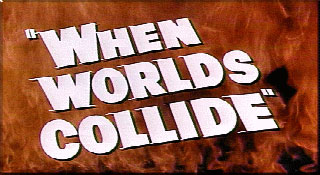
Following the success of the 1950 Destination Moon, George Pal pressed forward with a second science fiction masterpiece that kept his characters more closely bound to Earth throughout the bulk of the movie. Based on the 1933 book of the same name, When Worlds Collide continued Pal’s affinity for politically based stories, wondrous spectacles, and one-dimensional characters. Ironically, the strongest part of the setting is its impact on the human element and the human element is what is most lacking in this film. Where the novel was a tale of conflict, George Pal introduced a religious element to the story that made the event seem like a divinely engineered event rather than an interstellar fluke. Just to press the point, the film begins with a Biblical quote: “And God looked upon the Earth and beheld it was corrupt for all flesh has corrupted his way upon the Earth”.
Despite its flaws, When Worlds Collide is a masterpiece of science fiction and a great classic film. In this tale, mankind is faced with absolute destruction from an approaching planet that is on a collision course with Earth. Yet, in this setting there is some hope. Behind the approaching mass, there is a second planet capable of supporting life.
Although the mass of humanity is doomed, a handful of survivors might escape in a space ark. Thus that’s precisely what one millionaire intends to make happen.
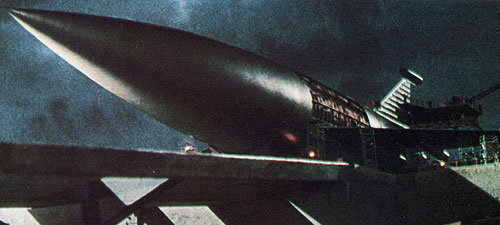
To many, this portrayal of mankind calmly facing its destruction seems unrealistic. George Pal intended to show prideful people, realizing the futility of resisting their impending deaths and willing to contribute their efforts to ensure that the best representatives of mankind might survive. In a key scene, one of the primary rocket designers is chosen to survive and is upset as he feels others are more deserving. The worst sense of crisis is shown when a couple is separated, with one chosen to live and the other selected to remain and perish. The only character shown acting selfishly is the millionaire who sponsored the entire project to ensure his own survival. In the film he is portrayed as a bit immoral, at least until you realize that without his own self-centered desire to live, the space ark would never have been built in the first place.
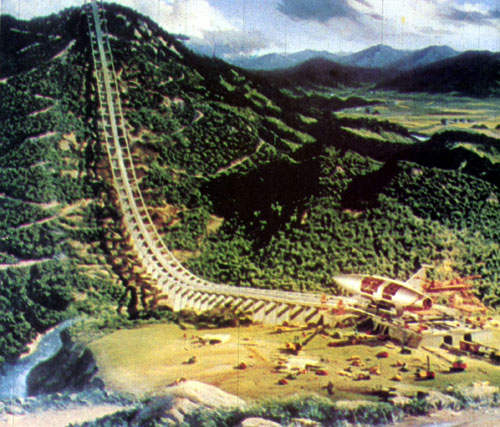
As disaster looms, the movie maintains a good sense of urgency and the rocket construction, shown in progressive stages, is an impressive thing to watch. The rocket launch rail, stretching up a mountainside, and the rocket itself, gives a good sense of how massive the survival effort really is. This is made even more striking as the film illustrates that there are many, many more people working on this thing than can ever be saved.
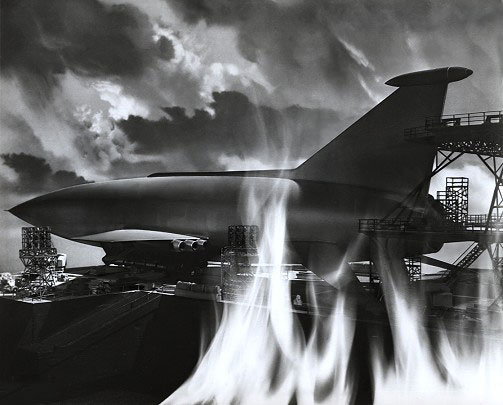
The ending destruction sequences are worthy of an Irwin Allen disaster movie. Gravity fluxes caused by the approaching planet tear at the oceans and cause waves to crash through the streets of New York City. Ships are tossed on their sides between skyscrapers. On the city scale, mankind begins to die as the rocket launches off the Earth’s surface and speeds away into space. Ironically, the final collision between the Earth and the intercepting planet takes place entirely off-screen.
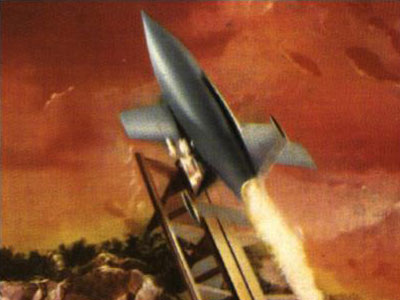
The film ends with a handful of survivors looking out at a new world, reminiscent of Noah gazing at the landscape after the Deluge or the Hebrews staring at the Promised Land after the Exodus. The Biblical ending isn’t glaring, but you don’t have to look far to find the obvious connection.
Comment: Despite the films overwhelming success, George Pal met with increasing resistance throughout the 1960s as he attempted to launch a sequel. He maintained a script that strictly adapted Balmer’s 1934 novel, After Worlds Collide. As the decade wore on, George Pal’s influence in Hollywood waned rapidly and the effort faded away. In 1976, Richard Zanuck and David Brown, the producers of the 1975 smash hit, “Jaws”, grabbed the rights to When Worlds Collide and planned a sequel of their own. The studios weren’t interested in continuing the story. Disappointed, the pair reworked their ideas to support a remake, focusing more on the terror element and how individuals would face certain death from outer space.
Their story changed many times as they tried unsuccessfully to gain financing. That situation changed in 1995 when NASA announced its plans to send a probe into the comet Tempel on 4 July 2005. The ambitious program, called Deep Impact, created a short media frenzy that inspired executives. Zanuck and Brown got their funds and their project was greenlighted. A remake of When Worlds Collide was underway.
Their ideas were subjected to further changes. Those financing the effort wanted a film that reflected the Deep Impact project an threatened to pull financing if further modifications weren’t made. Richard Zanuck and David Brown conceded and reworked their script yet again to create the 1998 hit Deep Impact, a tale about a comet hitting the Earth.
Unlike When Worlds Collide, where a handful of survivors escaped in a space ark, Deep Impact selected a few to escape destruction in underground shelters. In the modern version, private industry doesn’t come to the rescue of mankind after a government failure to act. Rather, a responsible government, led by an even-tempered and methodical president (Morgan Freeman), enacts several plans to best save the human race.
– written by the Two-Brained Cylon